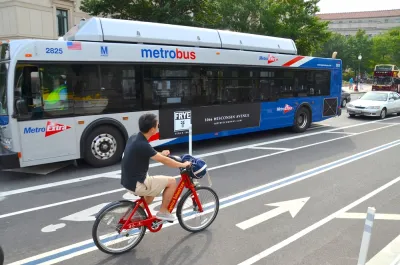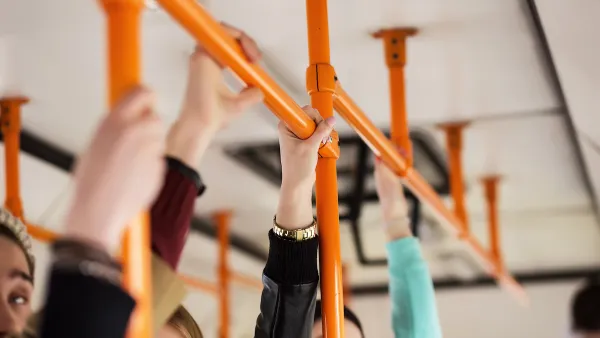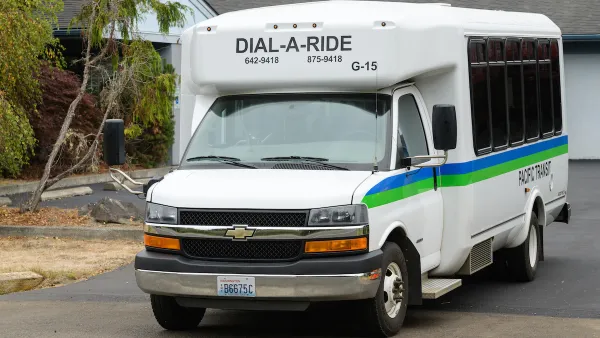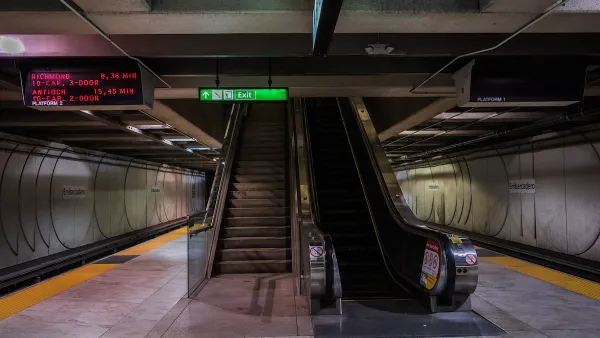Ridership data shows that many D.C. transit users depend on the service, despite a drop in ridership. The system needs changes—and funding—to have a future.

In an opinion piece published in Greater Greater Washington, DW Rowlands asserts that transit in the Washington, D.C. region has a “bright future,” if properly planned for.
The district certainly has transit challenges: the area still has one of the nation’s highest rates of remote work, and D.C. transit has historically relied on a heavy percentage of commuters. However, the distribution of ridership has also evened out over days and times, which, according to Rowlands, “actually has potential benefits for the system, because the extra service that transit agencies run to serve peak ridership is extremely inefficient compared to basic all-day service.”
Rowland adds, “Ridership changes since the start of the pandemic have also highlighted the importance of bus service. While Metrorail ridership first exceeded 50% of its pre-pandemic value in the first half of 2023, Metrobus ridership had returned to nearly 60% of its pre-pandemic value in the third quarter of 2021, and is now above 85% of pre-pandemic ridership.” Rowland attributes this in part to the fact that Metro bus routes serve more residential neighborhoods outside of downtown.
For Rowland, all this is to say that D.C. transit is still a key service for many of the region’s residents. “In the short term, finding the money to close the funding gap and prevent massive service cuts in next July is the most important part of making sure that Metro, and transit in our region generally, has a future.” Rowland also suggests long-term changes, such as fare reform, adapting schedules to match new travel patterns, and adding more bus lanes to improve reliability.
FULL STORY: Transit in the Washington region has a future, if we plan for it

National Parks Layoffs Will Cause Communities to Lose Billions
Thousands of essential park workers were laid off this week, just before the busy spring break season.

Retro-silient?: America’s First “Eco-burb,” The Woodlands Turns 50
A master-planned community north of Houston offers lessons on green infrastructure and resilient design, but falls short of its founder’s lofty affordability and walkability goals.

Delivering for America Plan Will Downgrade Mail Service in at Least 49.5 Percent of Zip Codes
Republican and Democrat lawmakers criticize the plan for its disproportionate negative impact on rural communities.

Test News Post 1
This is a summary

Test News Headline 46
Test for the image on the front page.

Balancing Bombs and Butterflies: How the National Guard Protects a Rare Species
The National Guard at Fort Indiantown Gap uses GIS technology and land management strategies to balance military training with conservation efforts, ensuring the survival of the rare eastern regal fritillary butterfly.
Urban Design for Planners 1: Software Tools
This six-course series explores essential urban design concepts using open source software and equips planners with the tools they need to participate fully in the urban design process.
Planning for Universal Design
Learn the tools for implementing Universal Design in planning regulations.
EMC Planning Group, Inc.
Planetizen
Planetizen
Mpact (formerly Rail~Volution)
Great Falls Development Authority, Inc.
HUDs Office of Policy Development and Research
NYU Wagner Graduate School of Public Service





























